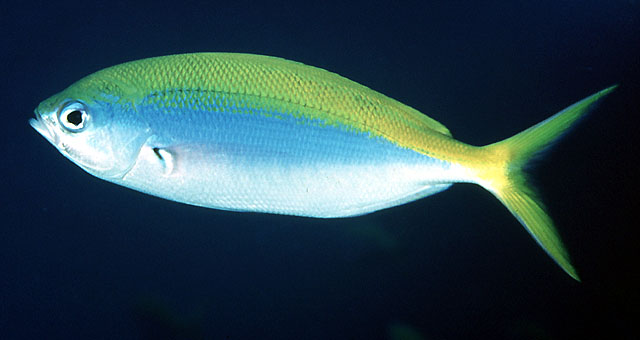| Caesionidae (Fusiliers), subfamily: Caesioninae |
| 40 cm TL (male/unsexed) |
|
reef-associated; marine; depth range 0 - 50 m, non-migratory |
| Indian Ocean: East Africa (not including the Red Sea and the Arabian (Persian) Gulf) to Indonesia. Records of this species from the Marshall Islands and Australia are probably misidentifications of Caesio teres. |
|
Dorsal spines (total): 10-10; Dorsal soft rays (total): 14-15; Anal spines: 3-3; Anal soft rays: 11-12. Upper 1/3 of body and caudal fin bright yellow, middle third blue, lower white. 4-5 scales on cheek; 20-25 predorsal scales; scaled dorsal and anal fins; narrow scaleless zone interrupting the Supra-temporal band of scales at the dorsal midline. Upper peduncular scale rows 11 or 12; lower peduncular scale rows usually 15 (14-16). Presence of a small process on each ventrolateral surface of basioccipital for attachment of Baudelot's ligament. Post maxillary process single; posterior end of maxilla blunt (Ref. 1723). Head length 3.0-3.4 in SL; body depth 2.9-3.5 in SL (Ref. 90102). |
| Inhabits deep lagoons and along seaward reefs (Ref. 9710), primarily around coral reefs. Feeds on zooplankton in large midwater aggregations. Oviparous, with numerous, small pelagic eggs (Ref. 402). |
|
Least Concern (LC); Date assessed: 06 March 2015 Ref. (130435)
|
| harmless |
|
Source and more info: www.fishbase.org. For personal, classroom, and other internal use only. Not for publication.

